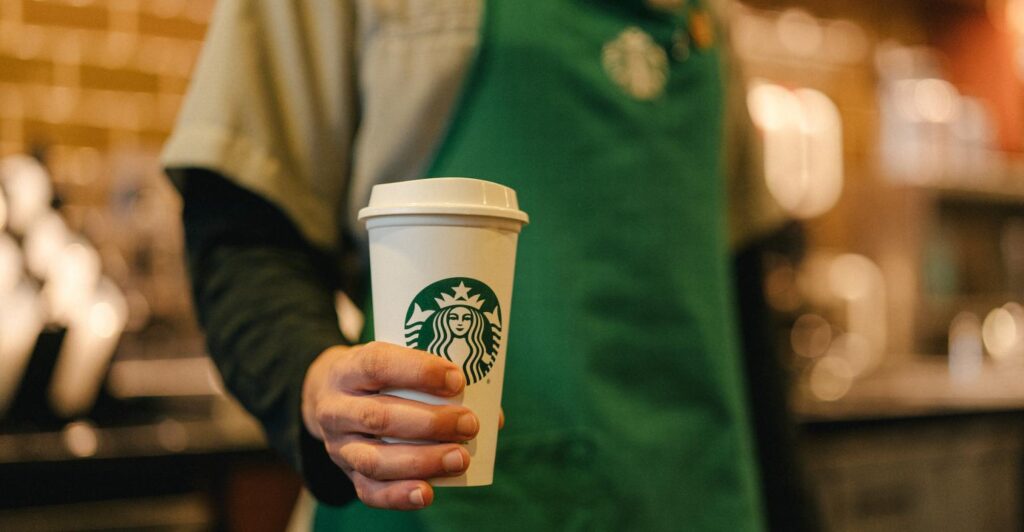Consumer demand for coffee is up across all major chains
Consumer traffic to coffee shops is driven mainly by major development trends, according to new Placer.ai research.
27 June 2024
Share this exclusive content from Saladplate

Starbucks is not performing quite as well as other coffee concepts. | Photo Credit: Starbucks
Even though Starbucks reported declining sales for the first time in almost three years, the silver lining is that coffee demand is on the rise around the country. According to the latest data from Placer.ai, year-over-year visits to coffee chains increased in every single state from the first five months of 2023 to the first half of 2024. Industry-wide, that translates to roughly 5.1% traffic growth for coffee chains around the country.
According to Placer.ai, most of this foot traffic is being driven by coffee chain development, which proves that consumer demand for coffee shops is matching the companies’ drive for expansion.
The biggest foot traffic boosts are coming from smaller, rural markets like Oklahoma and Wyoming, which were traditionally some of the “last frontiers” for major foodservice chains. This trend matches the push for expansion among the largest coffee brands like Starbucks and Dunkin’, which have already saturated larger urban markets. Last year, according to Technomic data, growth within the coffee category was dominated by drive-thru-format concepts like Dutch Bros and 7 Brew, as suburban markets flourished.
According to Placer.ai, among four of the major coffee chains — Starbucks, Dunkin’, Dutch Bros and Biggby Coffee — only Starbucks saw negative traffic measured in visits per location.
What exactly could have driven this surge in coffee demand, particularly among newer concepts? One major driver could be the return to the office. As work from home policies continue to dwindle in a post-COVID world, more American workers are relying on their morning coffee rituals that take place at a coffee shop instead of in their kitchen at home.
Placer.ai data shows that this has especially been a boon for Starbucks — which has traditionally been found in densely populated commuter cities — and saw a 2.4% boost in pre-work coffee purchases from 2022 to 2024. The percentage of early morning Starbucks visits under 10 minutes increased 4.3% from 2022 to 2024, indicating a likely shift back to pre-pandemic morning coffee purchases. Dunkin’ has also received a boost in traffic from short visits and is performing better in states with a higher percentage of short visits.
Although the coffee industry has been performing well in general, not all brands’ customers are behaving the same way. While Starbucks and Dunkin’ appear to be resonating best with commuters, Dutch Bros’ key demographic is young singles, according to Placer.ai data—particularly young adults living alone. For example, in Tucson, Ariz. — which has a higher-than-average percentage of single residents — Dutch Bros saw a 6% increase in average visits per location for the first five months of the year. This data matches well with the “cool kid” reputation Dutch Bros has, particularly among Gen Z consumers.
On the opposite side of the spectrum, Biggby Coffee performs best among suburbanites, particularly in the Baby Boomer generation, according to Placer.ai. This specific demographic made up 10.6% of the company’s top markets in 2024 so far. The company in general appears to be going after Midwestern and Southern small-town families, targeting a niche demographic separate from some of the brand’s trendier competitors.
As the coffee industry continues to flourish, the segment-wide success could offer a clue into Starbucks’ 2024 slump. People have many more coffee chain options these days than they did when it was mainly a contest between Starbucks and Dunkin’. As competition for coffee cup shares heats up, it has become harder for Starbucks to rely on its reputation as the default option.

Source: Nation’s Restaurant News



